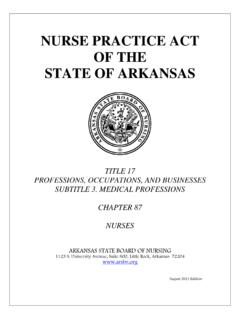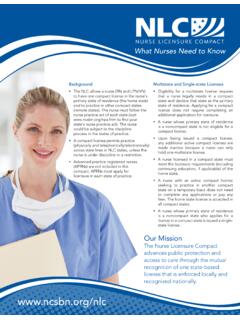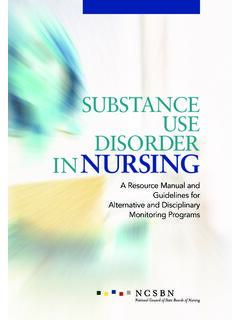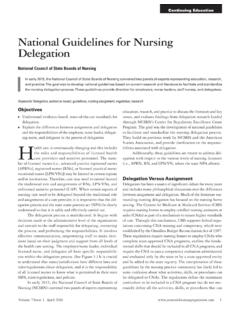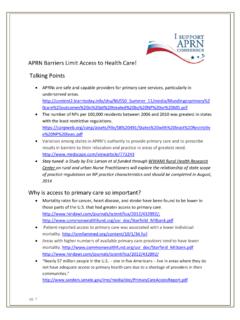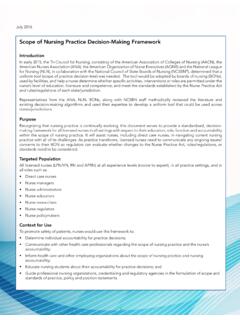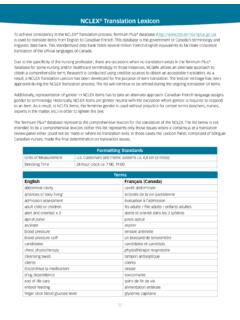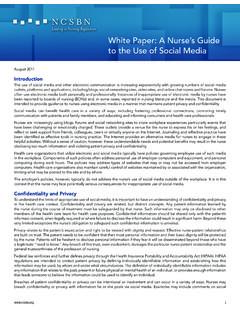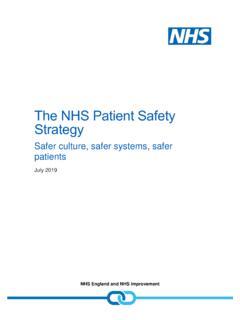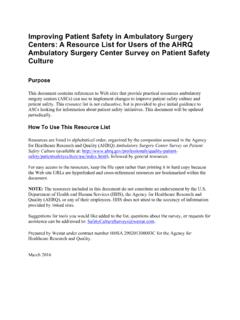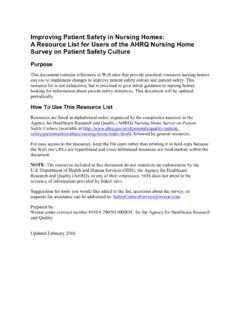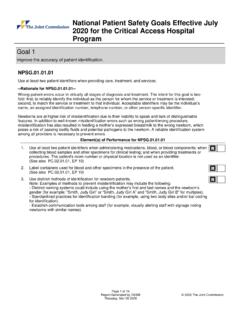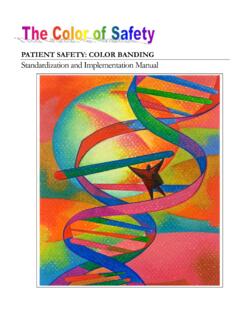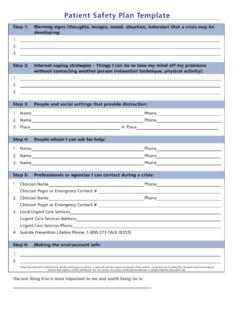Transcription of Facts about the National Patient Safety Goals - NCSBN
1 Facts about the National Patient Safety Goals In 2002, The Joint Commission established its National Patient Safety Goals (NPSGs) program; the first set of NPSGs was effective January 1, 2003. The NPSGs were established to help accredited organizations address specific areas of concern in regards to Patient Safety . Development of the Goals A panel of widely recognized Patient Safety experts advise The Joint Commission on the development and updating of NPSGs. This panel, called the Patient Safety Advisory Group, is composed of nurses, physicians, pharmacists, risk managers, clinical engineers and other professionals who have hands-on experience in addressing Patient Safety issues in a wide variety of health care settings. The Patient Safety Advisory Group works with Joint Commission staff to identify emerging Patient Safety issues, and advises The Joint Commission on how to address those issues in NPSGs, Sentinel Event Alerts, standards and survey processes, performance measures, educational materials, and Center for Transforming Healthcare projects.
2 Following a solicitation of input from practitioners, provider organizations, purchasers, consumer groups, and other stakeholders, The Joint Commission determines the highest priority Patient Safety issues and how best to address them. The Joint Commission also determines whether a NPSG is applicable to a specific accreditation program and, if so, tailors the goal to be program-specific. 2012 Goals The Joint Commission has approved one new NPSG for 2012 that focuses on catheter-associated urinary tract infection (CAUTI) for the hospital and critical access hospital accreditation programs. CAUTI is the most frequent type of health care-associated infection (HAI), and represents as much as 80 percent of HAIs in hospitals. The new goal, , states: Implement evidence-based practices to prevent indwelling catheter-associated urinary tract infections (CAUTI). In 2012, hospitals are expected to plan for full implementation of the NPSG in 2013. (This goal is not applicable to pediatric populations).
3 And its EPs are posted on The Joint Commission website. The goal was one of two HAI-related Goals recommended to The Joint Commission in July 2010 by the Patient Safety Advisory Group. The other potential goal focused on ventilator associated pneumonia (VAP), but input from the field review and from The Joint Commission s Hospital and Long Term Care Professional and Technical Advisory Committees (PTACs) indicated that the lack of a nationally agreed-upon definition made it difficult to consistently identify and measure VAP. For more information The National Patient Safety Goals for each program and more information are available on The Joint Commission website. Questions can be sent to the Standards Interpretation Group at (630) 792-5900 or via the Standards Online Question Submission Form. 6/12
